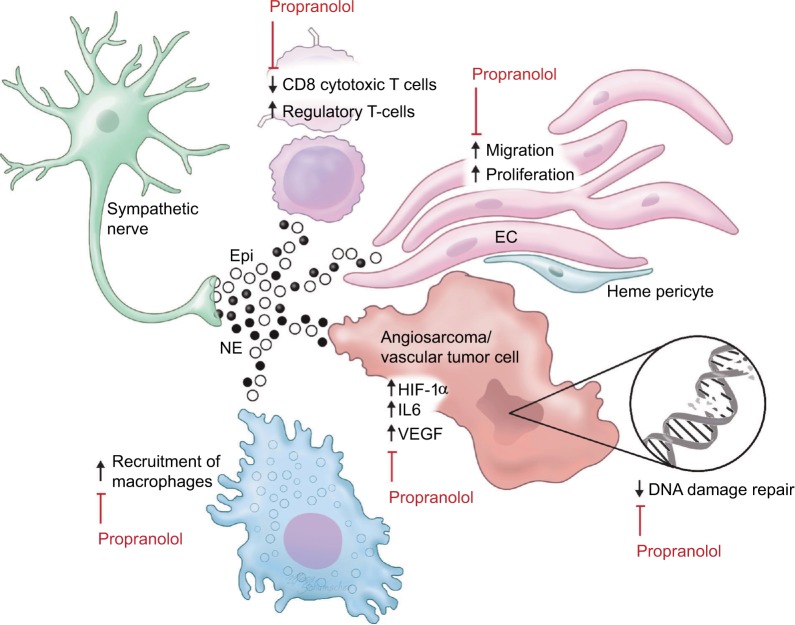Figure 1.
Adrenergic signaling in the vascular tumor microenvironment.
Notes: Epi and NE produced in sympathetic nerves act on β-adrenergic receptors present on T-cells, ECs, macrophages, and tumor cells. Activation of adrenergic receptors decreases infiltration by cytotoxic T-cells, increases the number of regulatory T-cells, and increases the recruitment and differentiation of tumor-associated macrophages. Sympathetic signaling also increases the migration and proliferation of normal ECs. In tumor cells, adrenergic signaling stimulates production of other proangiogenic and inflammatory mediators such as HIF-1α, VEGF, and IL-6 and suppresses the DNA damage response. Propranolol inhibits these oncogenic changes by blocking the β-receptors through which Epi and NE act.
Abbreviations: Epi, epinephrine; NE, norepinephrine; EC, endothelial cell.

